Day 4 – Manatta
This day the pariwat monks had a second meeting, called manatta (มานัตต์), in the ubosot with the five-monk sangka. Manatta is a follow-up from the first day’s meeting after the monks have bawk wat three times. Just like the first day, things began with a quick group meeting and then the monks went in one by one; this time in ranked order. The monk repeats his confession and hears another relevant Pali chant – longer than the first day’s – from the ong suat monk. And because manatta takes longer, it was split into two session with 15 monks going from 7am to 8.30am and the other 41 monks running from a little before noon until 4.30pm. There was no afternoon chanting and meditation in the lahn-tam this day.
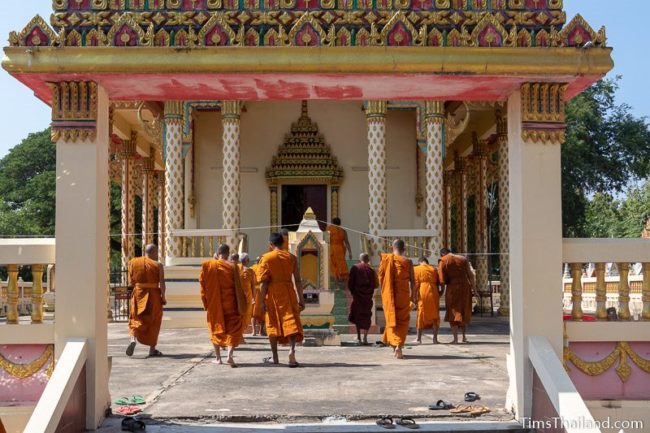
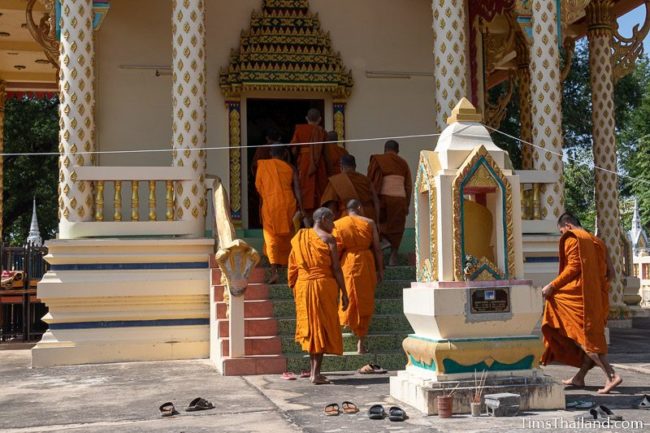
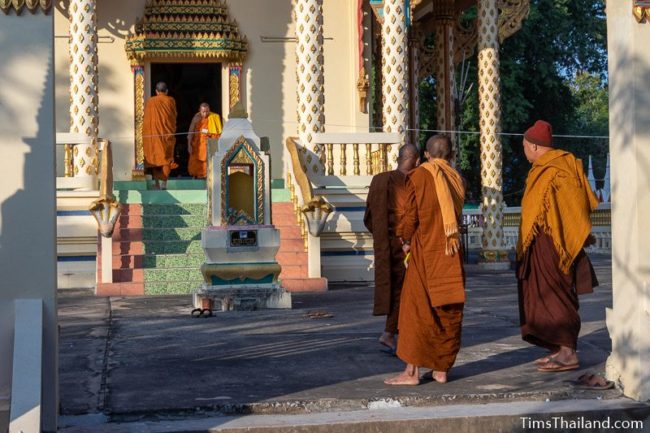
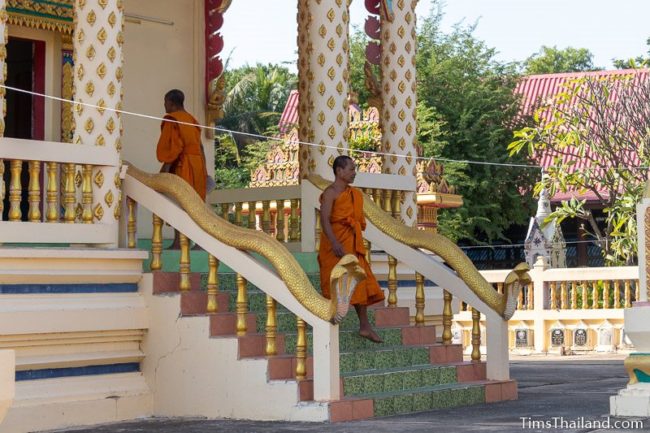
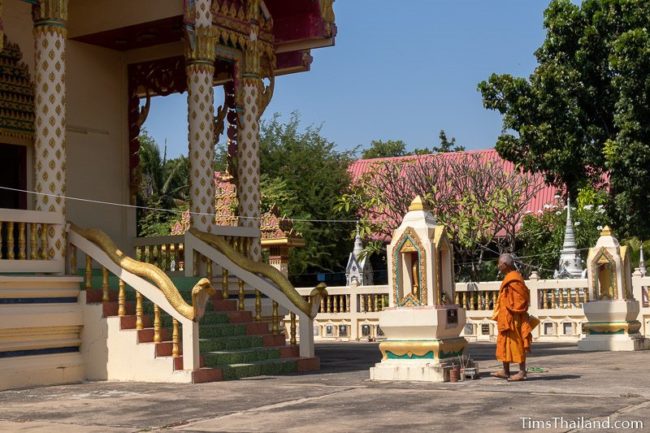
Day 5 – Father’s Day
The birthday of the late King Bhumibol Adulyadej (Rama 9) is celebrated as Father’s Day in Thailand, and because he is widely revered, it’s a special day for many people. Though there was no ceremony for the late king at the temple, as it’s unrelated to Boon Khao Kam, a large picture of him was erected next to the Buddha shrine and in his sermon the guest monk mentioned him as a good example for people to follow. Many of the people offering food that morning wore yellow, King Rama 9’s auspicious color. The picture stayed up and was presented with a food offering each morning until the last day.
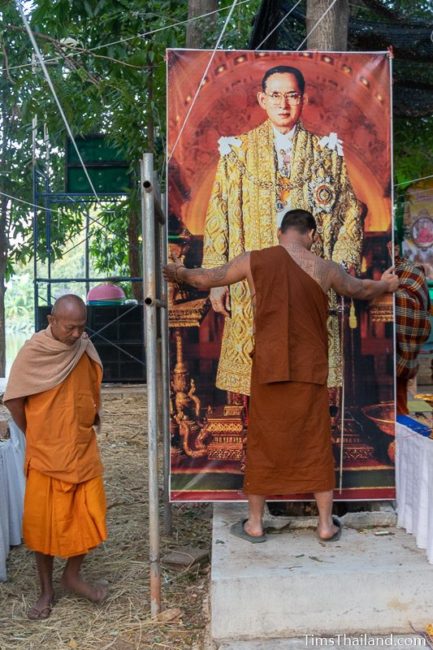
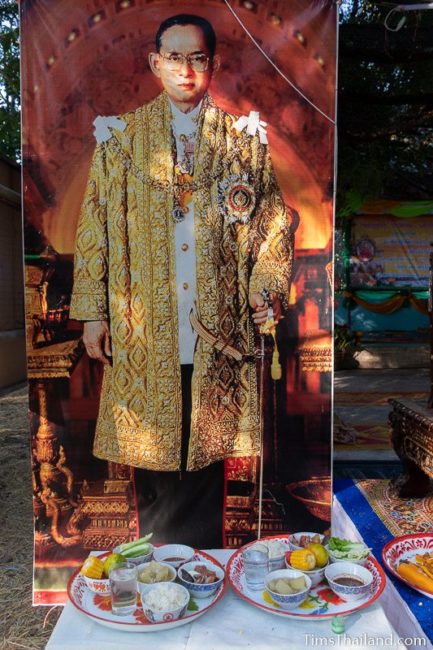
Day 8 – Sadaw-Kraw Daw Duang-Chada
After lunch – people started arriving at 11am and things began at 12.15pm – there was a sadaw-kraw daw duang-chada (สะเดาะเคราะห์ต่อดวงชะตา) blessing ceremony done for the lay community to expel their bad luck and ensure long lives. It’s a way for the temple to thank people for their support of the monks during Boon Khao Kam.
A huge grid, about 30×30 meters, of sai sin string had been strung over the center of the lahn-tam, where the people and the monks sat, and these were connected to five pulpits –for the temple’s abbot and four guest monks (all abbots) invited from other temples.
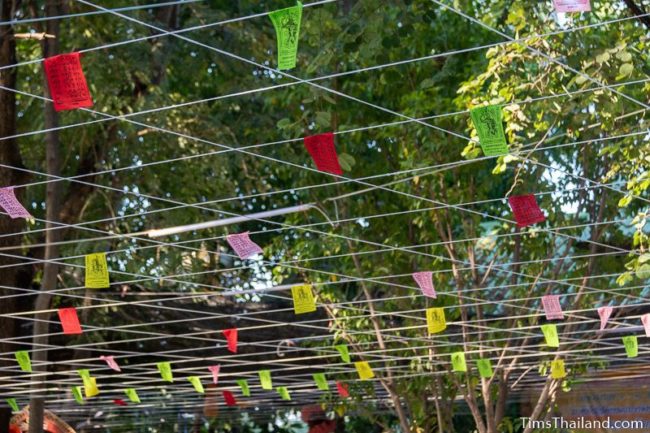
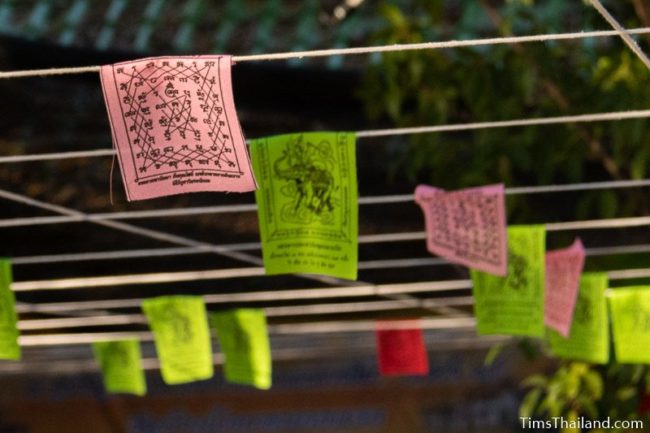
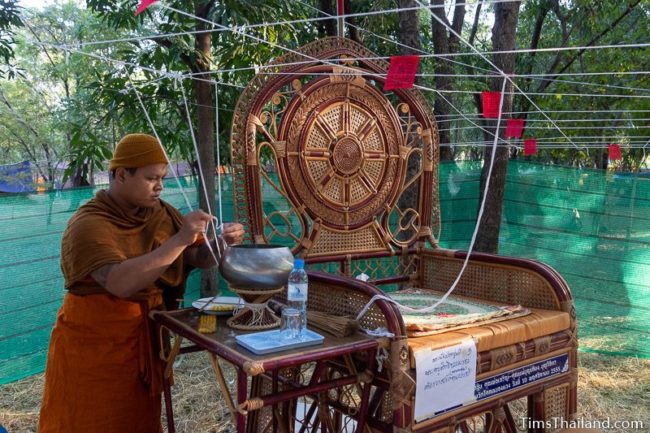
Each person tied their own string – which came in a 99-baht leaf packet along with three incense sticks, two candles, and a chrysanthemum – to the grid above them and most laid the free end on their head (a few laid it on their shoulder or just held it in their hands) creating a physical connection to the monks. The pariwat monks participated, but most did not hang a string.
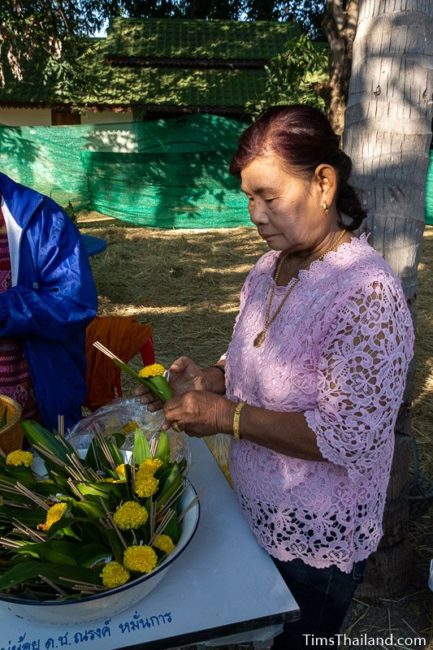
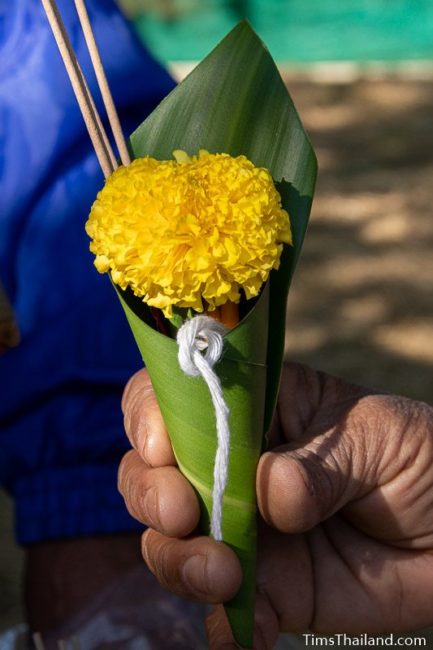
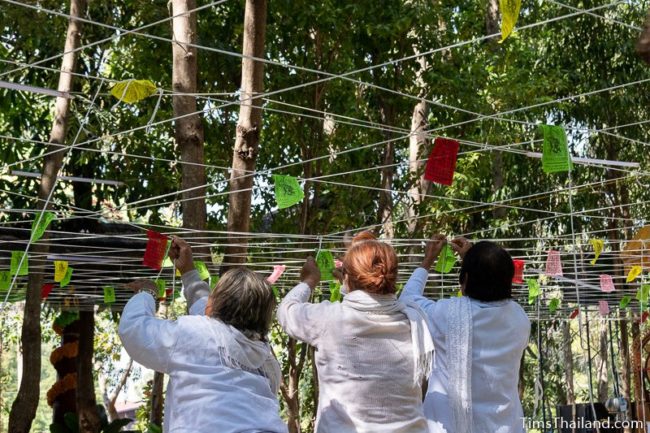
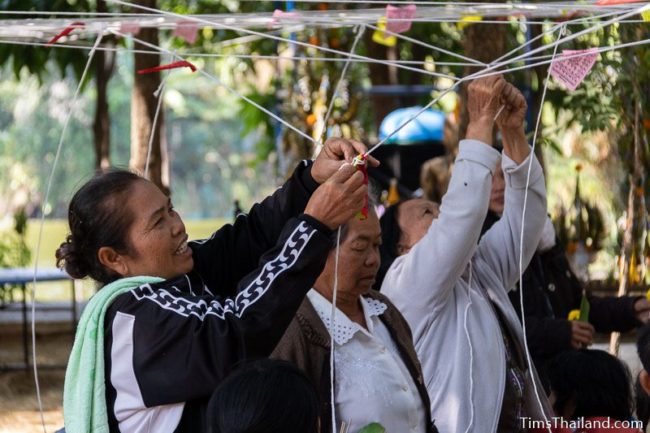
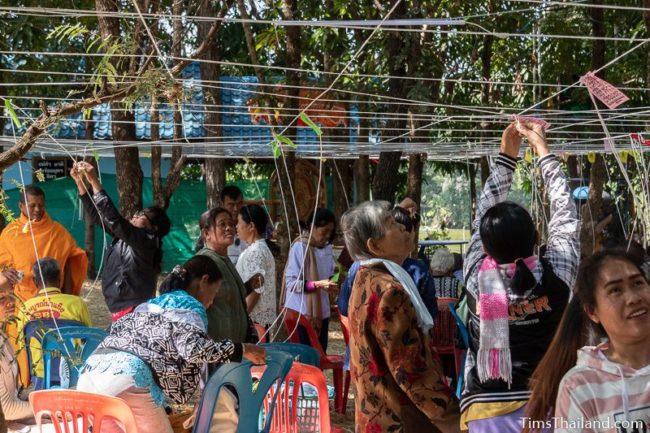
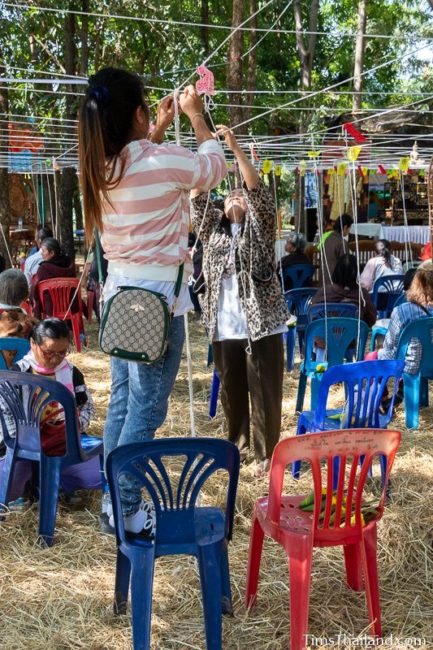
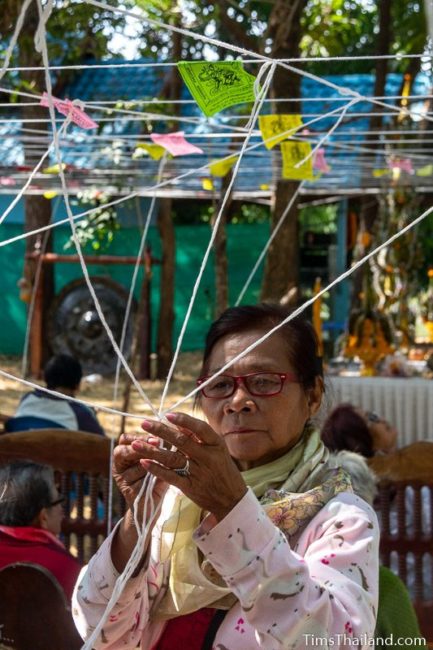
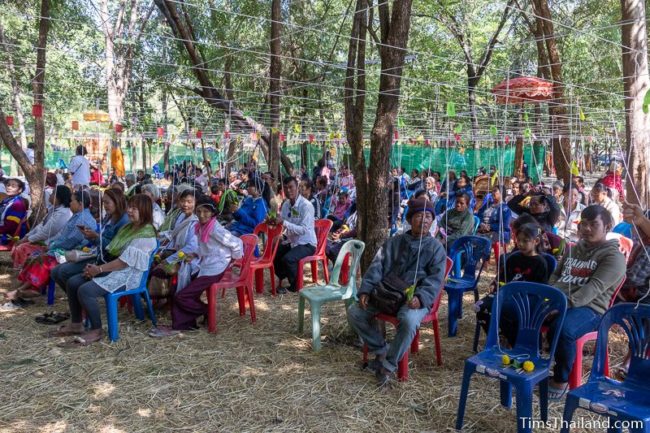
The monks chanted for half an hour and then one asked everybody born on Sunday to stand. They were blessed with a quick (30 seconds) chant and then they untied their strings and sat down, keeping their string on their head. Each day of the week (as is the tradition in Thai Buddhism, Wednesday was divided into morning and evening) got its own chant.
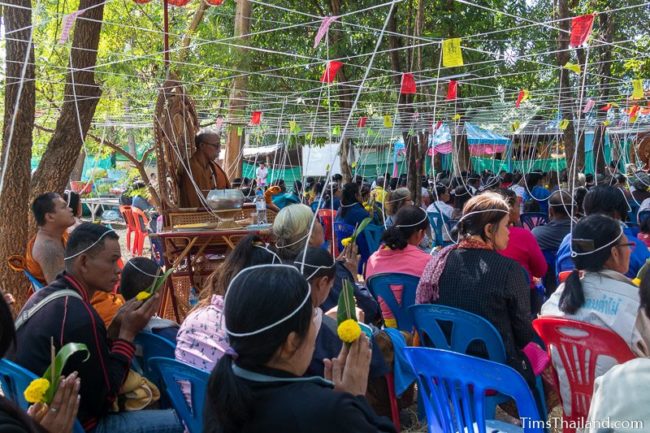
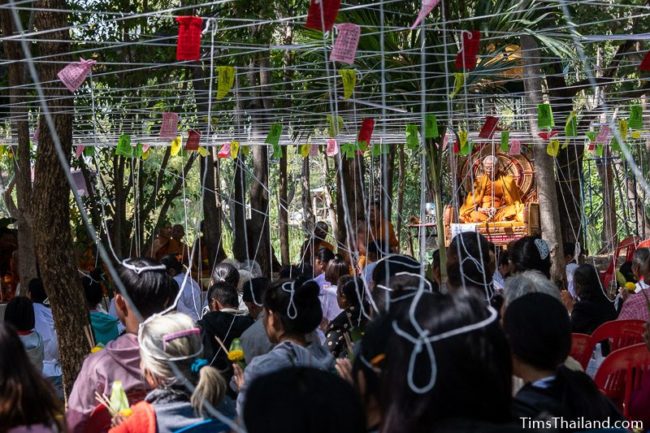
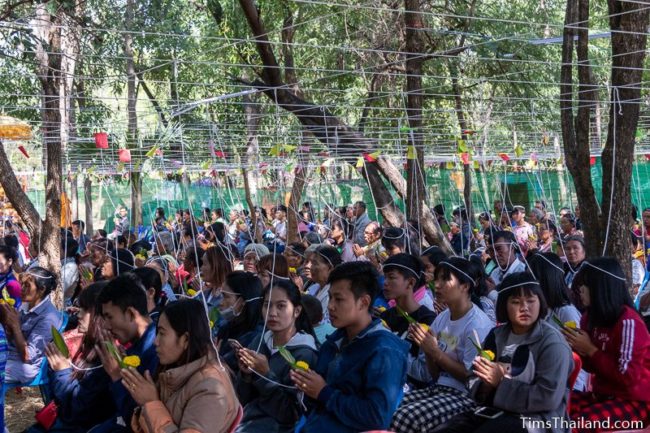
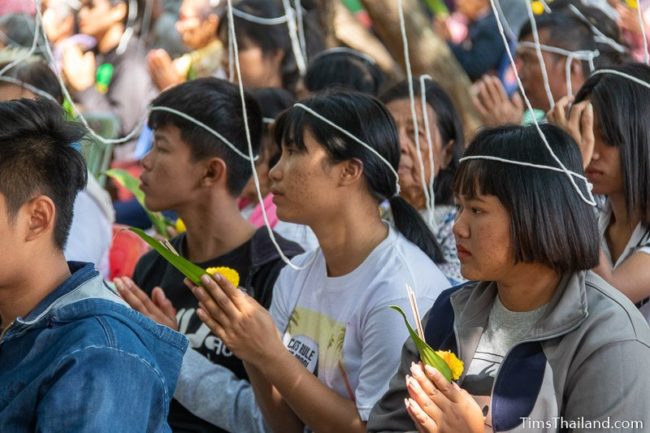
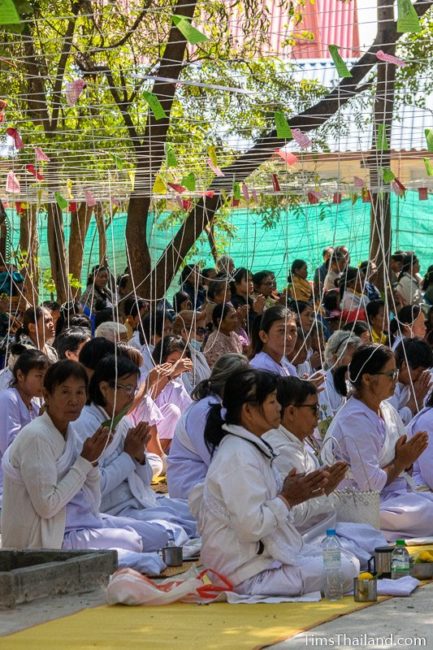
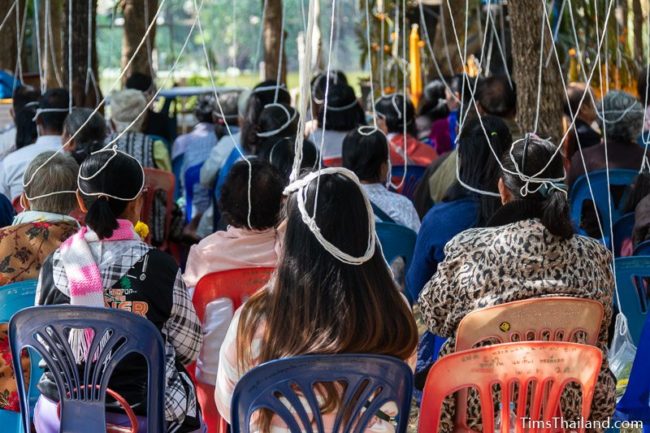
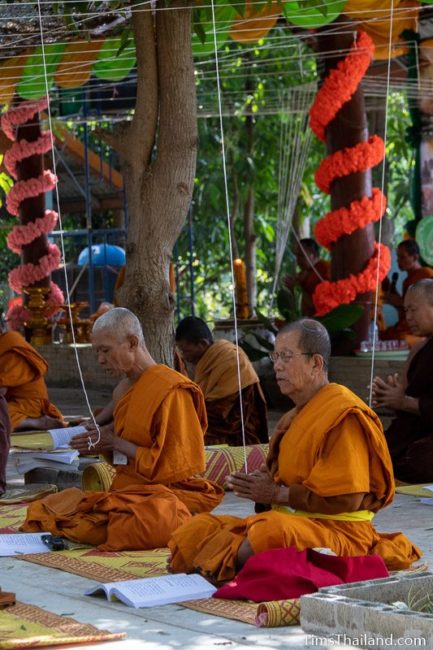
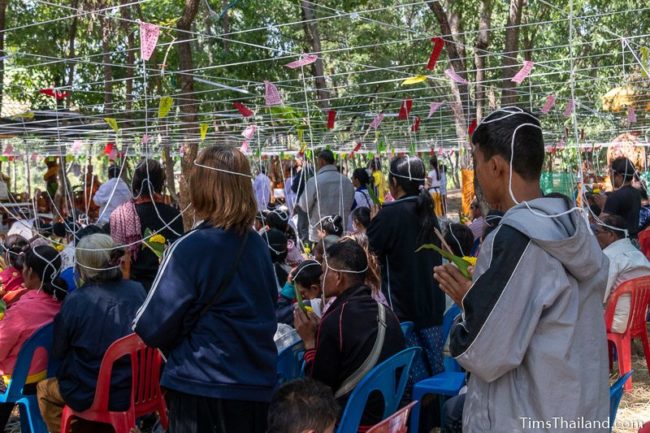
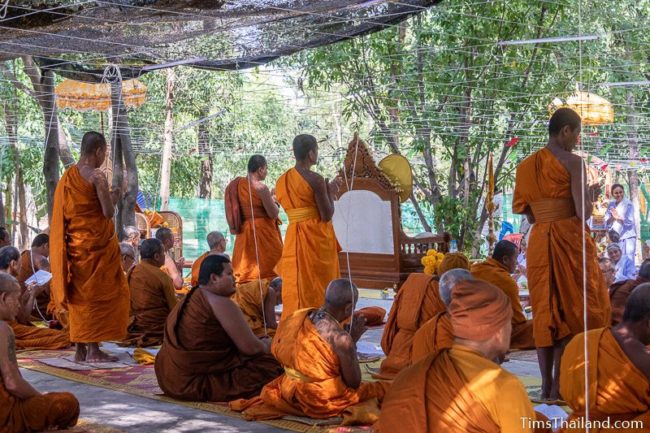
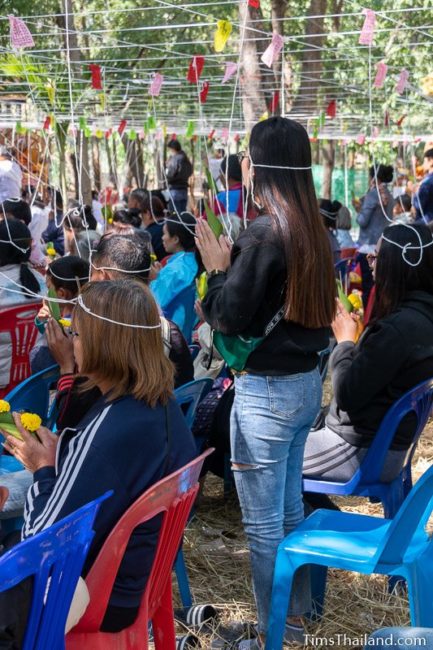
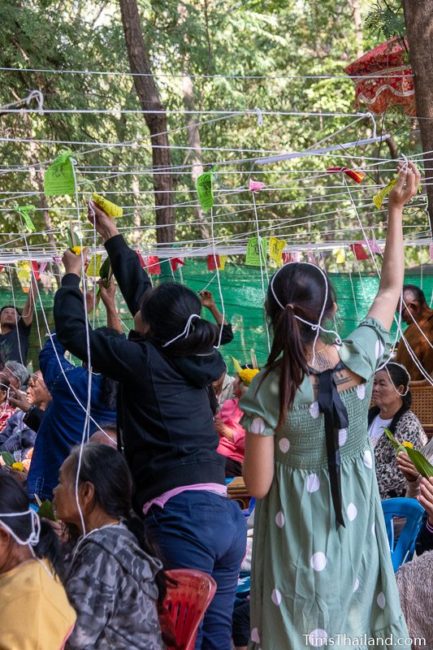
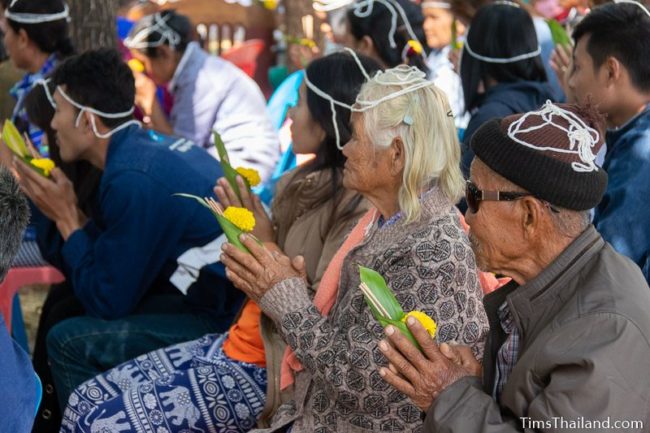
At 1pm, with everybody disconnected, the abbot and the guest monks walked around for several minutes to bless people with a splash of holy water. They also blessed several pick-up trucks, cars, and motorcycles that had been joined to the ceremony with their own sacred thread.
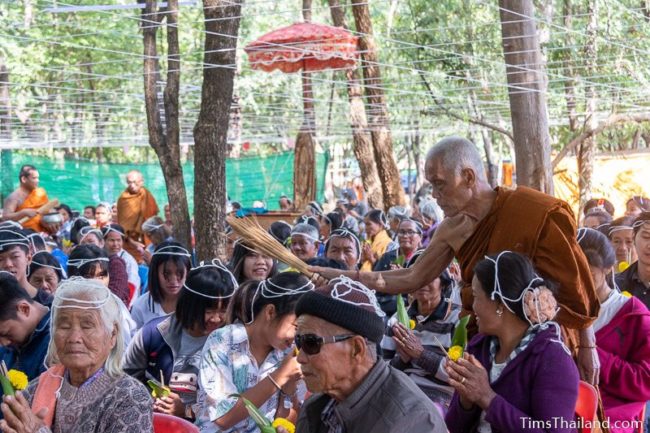
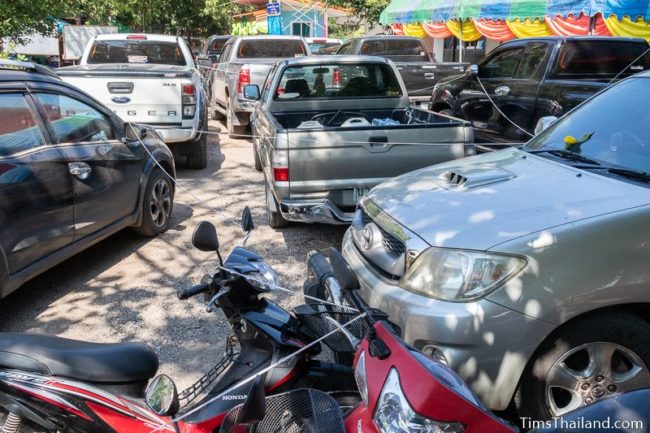
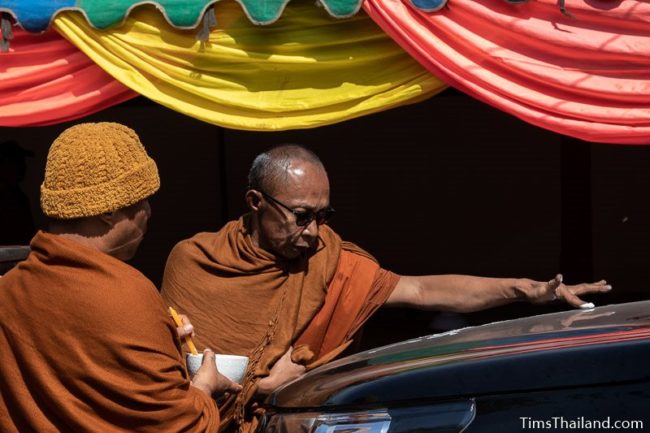
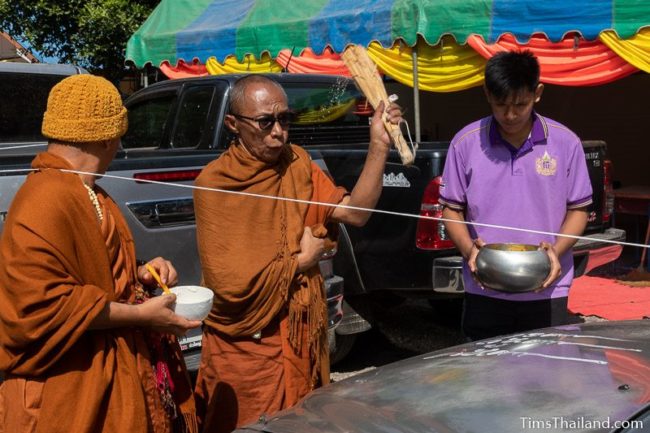
Following a final chant, people cut down the now holy strings and took the little flags of sacred yant symbols. Many people cut off pieces of the string to tie on their family and friends as charmed bracelets.
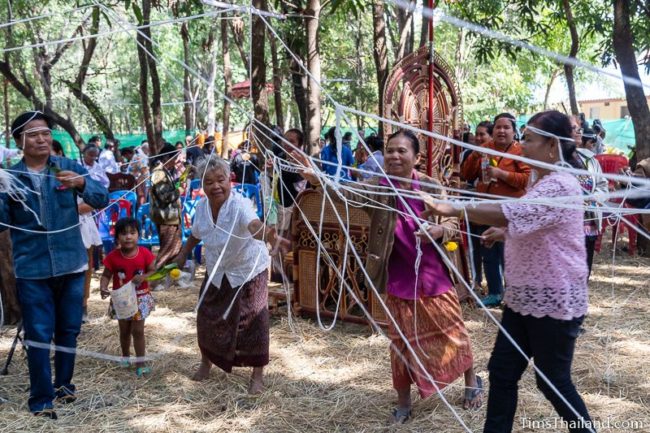
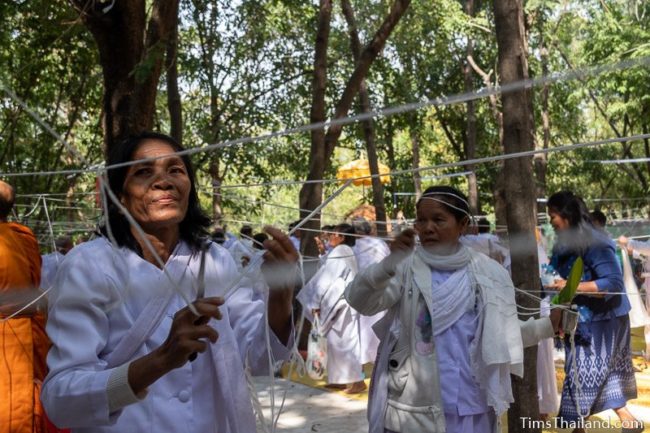
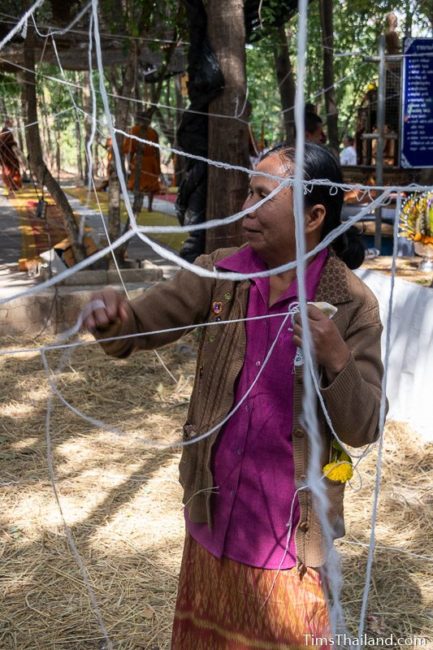
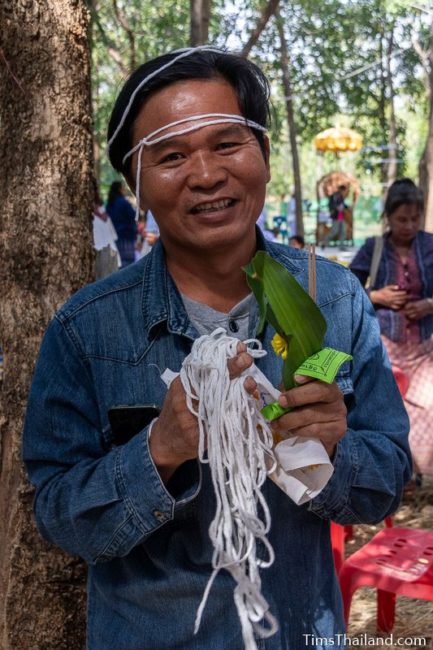
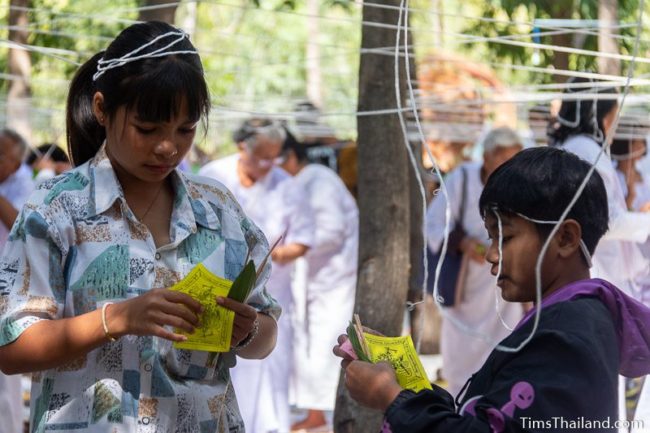
Because of this ceremony, there was no afternoon chanting and meditation session this day.
Day 10 – The End of Boon Khao Kam
The last day of Boon Khao Kam began more or less like the others, with only some small changes. The morning meal was just khao tom, no second dish, and after eating, many of the monks packed their bags and took down their tents.
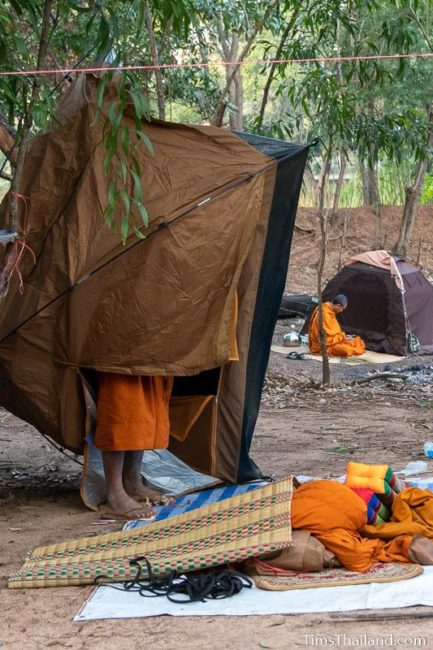
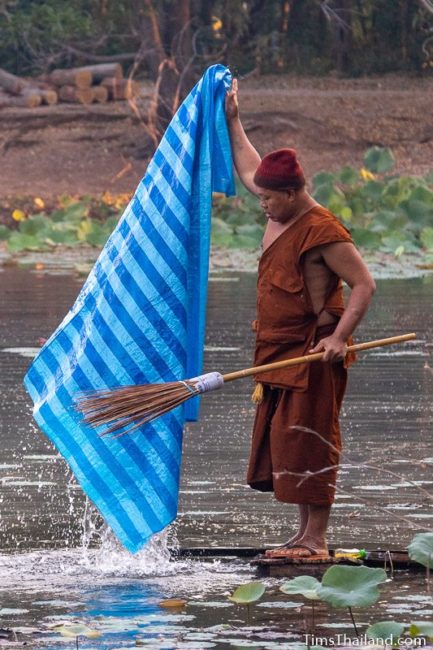
During the morning session, which had a very good turnout from the locals, Wat Ban Khok Nong Waeng’s abbot spoke, in more of a casual conversion than a sermon, about the success of this year’s Boon Khao Kam and told the history of the village (where he was born 66 years ago) and the hard times people of the past endured. When he was done, most people (unlike the other days when very few did it) poured gruat nam holy water to pass merit on to their ancestors. The alms walk started half an hour earlier than it had on the other days.
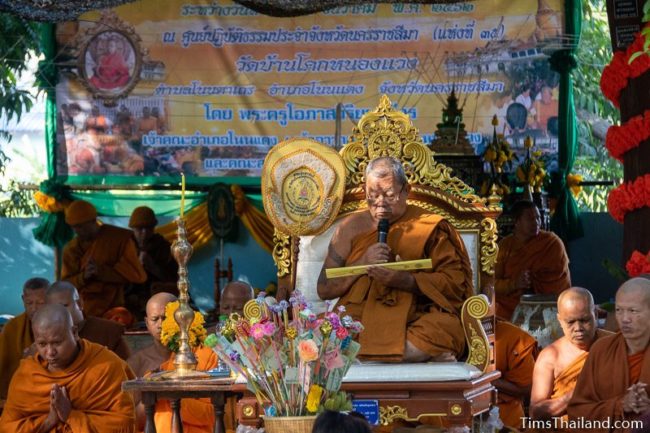
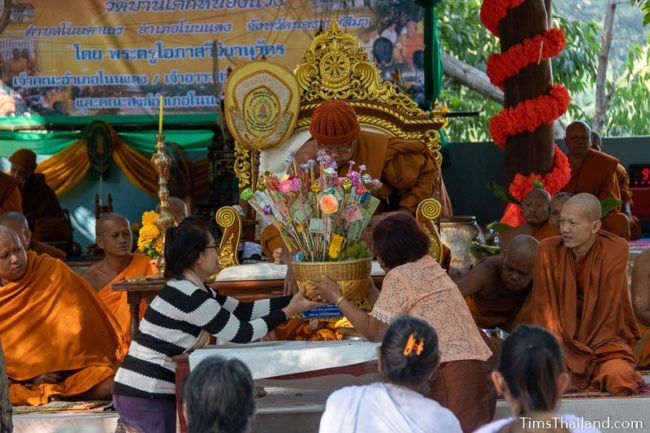
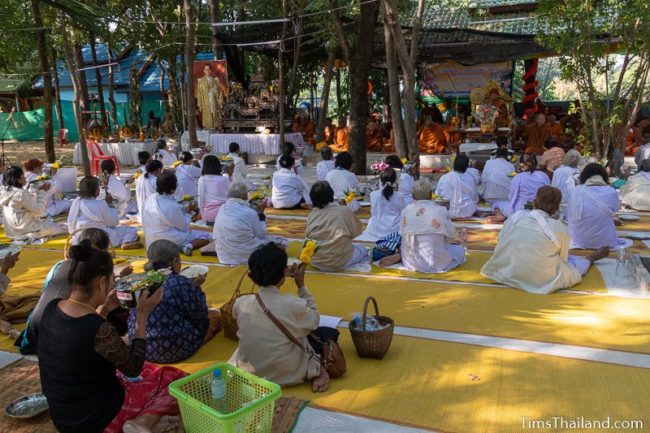
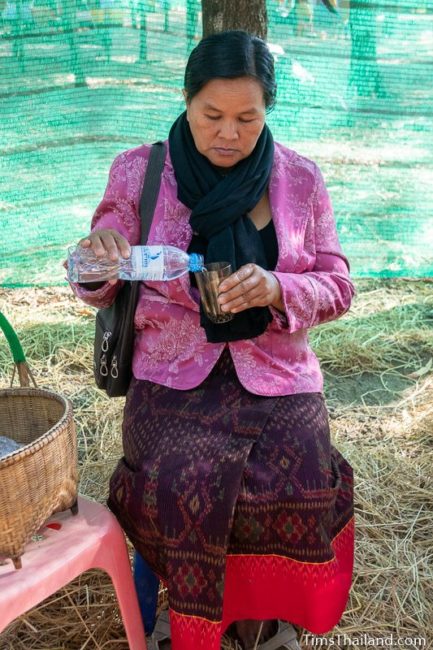
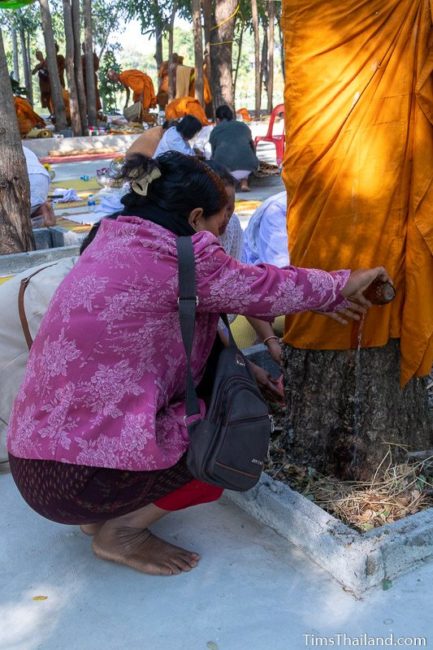
Cleanup of the temple started right after the food was served; local people and monks did the most work, but some mae/paw khao helped out before they headed home.
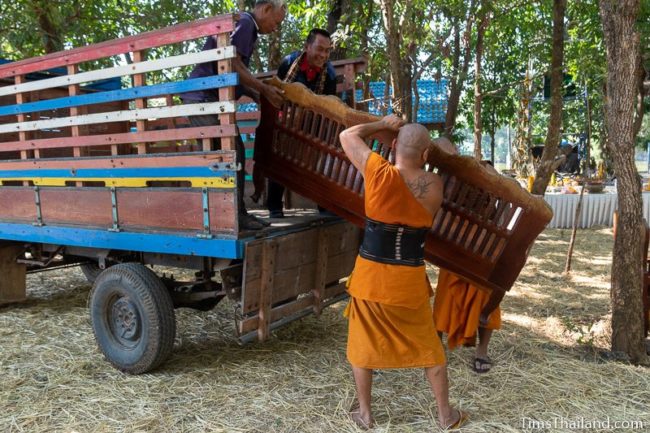
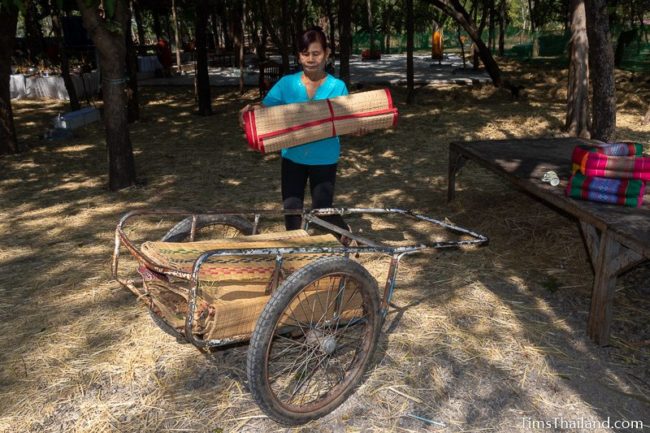
To end Boon Khao Kam, the pariwat monks had a third and final meeting in the ubosot, different from the first two, after which their penance was complete and they were fully absolved. Called appan (อัพภาน – formally it’s appanaraho, อัพภานารโห), this time the sangka consisted of twenty monks plus the ong suat, and though it’s essentially just a formality, they all needed to approve the pariwat monks’ restoration. For convenience, the appan meeting was divided into two groups of 28 monks. The first started at 10.15am and finished at 12.45pm; the second began right after, and lasted two hours.
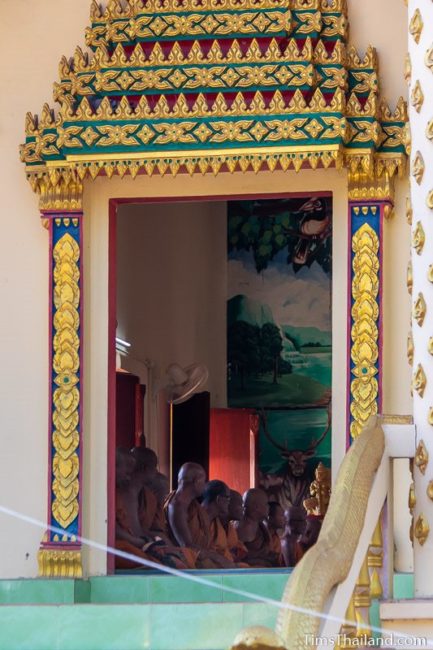
In each session, the ong suat monk talked for about five minutes and then they all did ten minutes of chanting together. As before, the pariwat monks came out to wait their turn for another individual meeting with the sangka. This quick discussion and chanting lasted just three minutes per monk, and as soon as the chanting was done, the monk was restored. This monk turned in their number tag and joined the sangka in place of the most senior original member – although a few of the former pariwat monks left early if other monks were waiting for them to return to their home temple together. After one final chant together, Boon Khao Kam was finished.
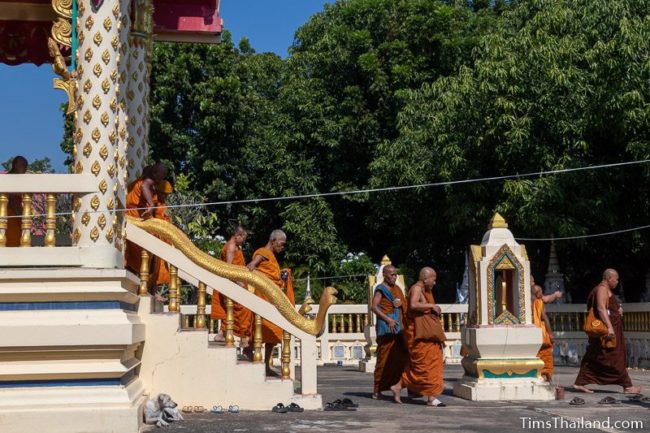
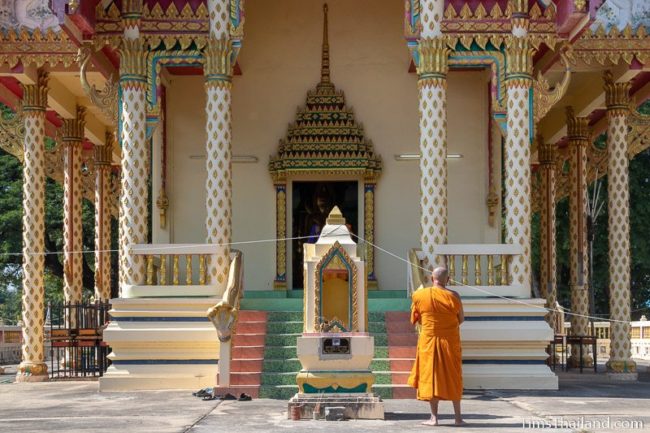
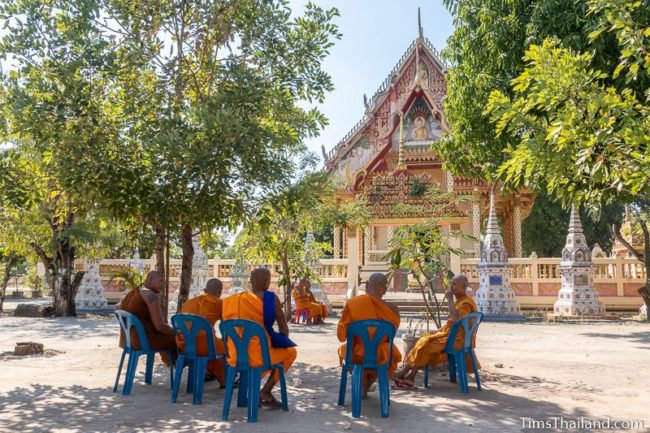
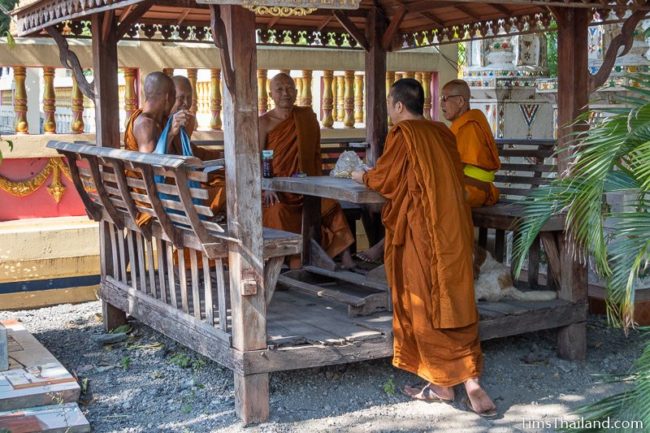
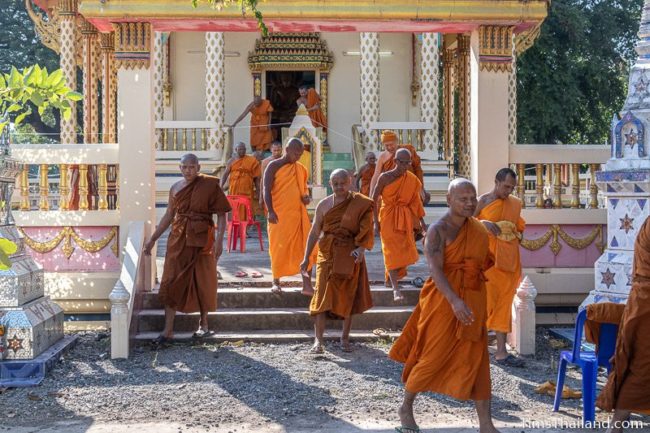
Most of the monks headed home right away. Some had people come pick them up, while others got a ride from someone at Wat Ban Khok Nong Waeng to the bus stop at the highway. A few drove themselves. Those who lived far away stayed one more night and departed the next morning.
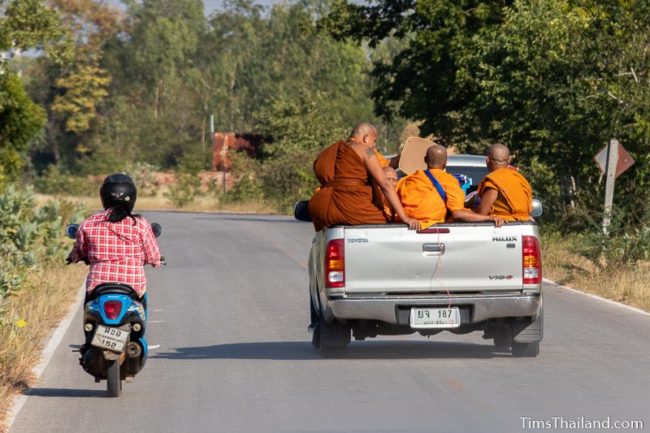
Boon Khao Kam (Month 1)
About Photo Essay
Boon Khun Lan (Month 2)
About Photo Essay
Boon Khao Jee (Month 3)
About Photo Essay
Boon Pha Wet (Month 4)
About Photo Essay
Boon Songkran (Month 5)
About Photo Essay
Boon Bang Fai (Month 6)
About Photo Essay
Boon Samha (Month 7)
About Photo Essay
Boon Khao Phansa (Month 8)
About Photo Essay
Boon Khao Pradap Din (Month 9)
About Photo Essay
Boon Khao Sak (Month 10)
About Photo Essay
Boon Ok Phansa (Month 11)
About Photo Essay
Boon Kathin (Month 12)
About Photo Essay